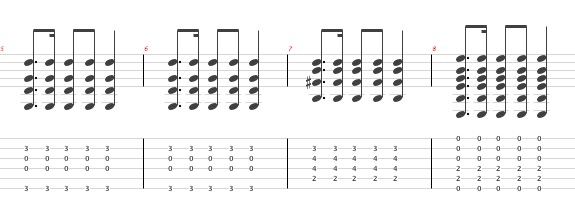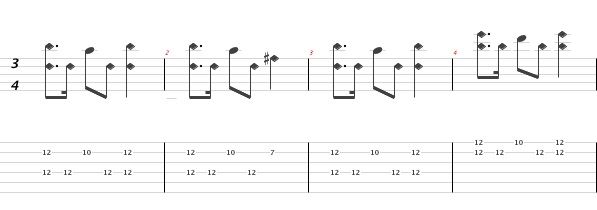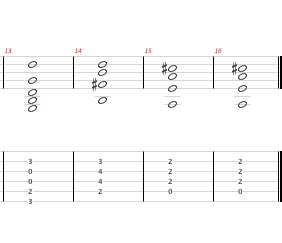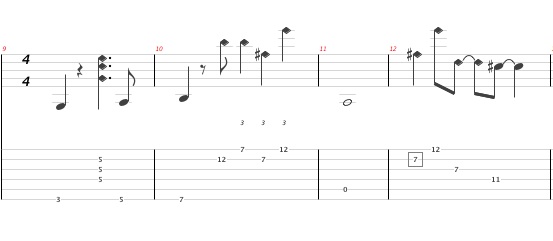Using Natural Harmonics to Surprise Listeners

This week, we're going to take some normal chord progressions and turn them into quirky/surprising/pretty guitar parts.
I often think of a “tough love” quote from an old teacher of mine: “People at venues have their food to eat, drink to drink, friends to talk to and every other venue in town to go to. Can you keep their attention?”
While that seems a tad harsh, it is good to some extent, as long as you use it to challenge yourself and surprise yourself with the music and guitar parts you come up with.
Let's start with a simple one. Example 1 is an example in ¾ that involves G, B minor and E minor played in the most basic way. Playing it this way makes sense if you're in a duo of voice and guitar, but when there's a drummer and bass player or especially a keys player in the band, this kind of playing won't stick out at all. It'll be a fine part, but again, is it the coolest part you could be playing? No.

So Example 2 is a natural harmonic reawakening of Example 1. Here there are higher voicings, a melody based on the original rhythm, and because we are using natural harmonics and not fretting too many notes, we end up with a sound not many are used to hearing.
If you play this example for anyone, I can almost guarantee their eyebrows will raise and they'll say, “Ohhh” when you get to the F# seventh-fret harmonic. That's a good thing. Any time you see the chords G, B minor, E minor, F# minor, D, there are plenty of harmonics waiting to be played.

The next example, Example 3, is a good way to hold a dramatic G, B minor and A. You'd really be letting the other instruments in the band do the fancy footwork while you are holding down a harmonic reference point. Again, it's a fine part, but not the most surprising.
Get The Pick Newsletter
All the latest guitar news, interviews, lessons, reviews, deals and more, direct to your inbox!

Example 4 is exceptionally rhythmic and melodic at the same time and in a way tries to be the bass part and lead part. It starts by laying down the chord reference of G, then hitting the highest harmonics of G over on the fifth fret of the D-G-B strings. Then it walks up to B minor, creating some momentum before going into a melody of B-F#-E and landing on A.
A sits there for a second, then there's another melody to lead back into G. Extra points if you can artificial harmonic that last C# note. This second way of playing the chords is very distinct and may even change the way the rest of the band decides to play that section of the song.

At this point you may be thinking, “Well, that's all well and good, but what if I'm playing a song mostly involving F minor, Ab, Bb and Eb?” I'd say to put a capo on the first fret and the harmonics move accordingly. Unfortunately you're going to need a capo to play certain chords with natural harmonics, but it's worth it.
So when making a new song consider incorporating natural harmonics into the guitar part you're writing. Feel free to post any questions in the comments section and I'll get back to you.
Elliott Klein is a New York City-based guitarist/singer/songwriter who plays in Bright and Loud, Party Lights and many more.









